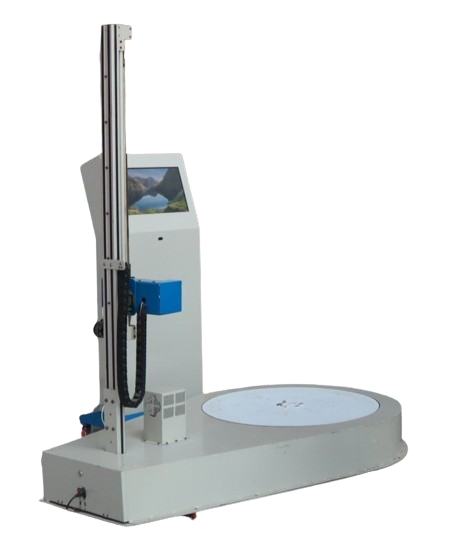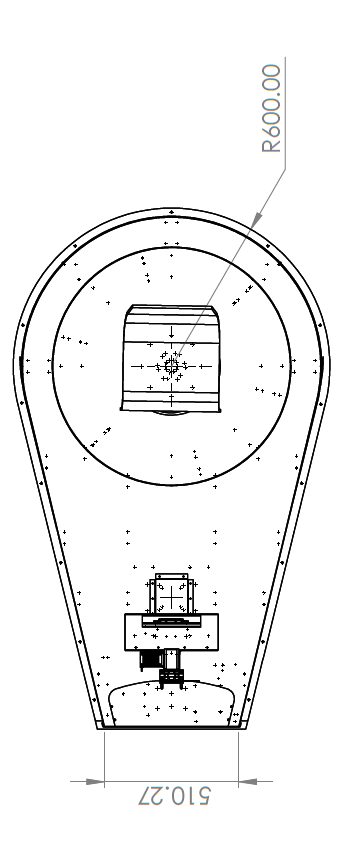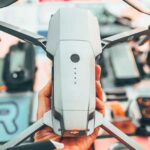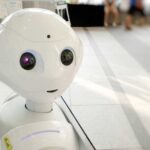3D Scanner
3D Scanner
3D scanners are transforming several sectors by scanning physical objects and creating very accurate duplicates. This technology replaces traditional approaches, such as manual measurements, by providing a faster and more precise way to capture complicated forms and dimensions. 3D scanners create detailed point clouds that form a digital representation of an object by projecting light or laser beams onto its surface and detecting reflections. These digital models can then be used for a wide range of purposes, such as quality control, reverse engineering, product design, and virtual prototyping. Finally, 3D scanning streamlines workflows, increases productivity, and opens up new opportunities for innovation and efficiency in a variety of industries.

Aspects
Accuracy
The accuracy with which the scanner catches the geometry of objects. Higher accuracy leads to more faithful reconstructions of the scanned items.
scanning volume
The size of the things that the scanner can successfully capture. Some scanners are intended for small, delicate objects, but others are capable of scanning larger objects or even entire surroundings.
ease to use
Refers to how easy and straightforward a 3D scanner is to use. The software interface, calibration process, and setup complexity all contribute to ease of use.
output format
The format in which scanned data is outputted varies amongst scanners. Point cloud data, mesh models, and formats compatible with CAD are examples of common formats. The output format selected may be determined by the intended use of the scanned data as well as compatibility with downstream programs.
INDUSTRIES
engineering
• AEROSPACE
In the aircraft sector, 3D scanners are essential for reverse engineering, quality control, and maintenance. They ensure correct component replication, confirm dimensions against CAD models, and aid in damage assessment and tool design, all of which improve precision and safety during aircraft operations.
• INSPECTION
In engineering inspection, 3D scanners rigorously compare real components to digital drawings, quickly discovering and correcting discrepancies to ensure tight quality control standards are followed. This rigorous procedure improves product reliability and safety, which is critical in precision-driven engineering applications.
• CONSTRUCTION
In the construction industry, 3D scanning technology serves a variety of purposes, including strategic planning, detailed documentation, and meticulous quality assurance. For example, it digitizes existing architectural structures to aid in renovation or extension planning, as well as precisely tracking building progress to assure specification conformance and project management proficiency.
Healthcare
• DENTISTRY
Dental 3D scanners are widely used to capture the structure of teeth, gums, and jaws. They are used in digital imprints for crowns, bridges, and dental implants, as well as orthodontics for treatment planning and monitoring.
• Anatomical Education and Research
In medical education and research, 3D scanners are used to build anatomical models for teaching and studying anatomical variations and disorders. They enable virtual dissections and simulations, which improves comprehension and investigation of human anatomy.
• Veterinary Medicine
In veterinary medicine, 3D scanners are used for diagnostic imaging, surgery planning, and the creation of personalized animal prosthetics or orthotics. They help to improve patient care and outcomes in the veterinary practice.
Entertainment
• ANIMATION
In animation production, 3D scanners are critical for capturing performers' complex face expressions, body movements, and gestures. This approach, referred to as performance capture, permits the conversion of these real-world performances into extremely realistic and emotive animations, improving the quality and authenticity of the final animated figures.
• Film and Television
These industries make heavy use of 3D scanners to create digital assets such as characters, props, and sets. They enable the exact capturing of real-world objects and settings, which may then be easily integrated into CGI (Computer-Generated Imagery) sequences.
• Virtual Reality (VR) and Augmented Reality (AR)
In the worlds of virtual reality (VR) and augmented reality (AR), 3D scanning technology is a foundation for creating immersive experiences. 3D scanners enable developers to create virtual settings that closely resemble reality, giving consumers a greater sense of immersion. Furthermore, this technology allows for the construction of interactive AR apps in which digital elements merge perfectly with the actual world, increasing user engagement and improving the overall experience.
Heritage
• Documentation and Digital Preservation
3D scanners produce precise and realistic three-dimensional reproductions of historical structures, monuments, archeological sites, and relics. These digital models serve as thorough documentation, conserving the physical properties and spatial linkages of cultural items for future generations.
• Conservation Planning and Restoration
This technology helps with conservation planning and restoration operations by giving critical data for assessing complicated architectural aspects, surface details, and material qualities. Conservation professionals may utilize 3D models to illustrate suggested restoration interventions, simulate the consequences of conservation treatments, and create educated conservation plans.
• Damage Assessment and Disaster Management
Assessing Damage and Disaster In the aftermath of natural catastrophes or man-made threats, 3D scanners are used to assess the level of damage to cultural places and artifacts. Rapid documentation, employing 3D scanning technology, aids in the prioritization of emergency response activities, facilitates damage assessment, and guides recovery and reconstruction initiatives.
features
DIMENSIONS | 201 x 125 x 218 cm |
|---|---|
CAMERA RESOLUTION | 640 X 280 |
CAMERA WORKING RANGE | 1.2 to 3.5 meters |
HORIZONTAL FIELD OF VIEW | 57° |
VERTICAL FIELD OF VIEW | 43° |
SCANNING TIME | 2 to 3 minutes |



GALLERY




Videos
DOWNLOADS
HUSKY OBSERVER OVERVIEW
Contact Us
The latest Robot news and resources contact straight legal Point.
11, William Grant Road, Markham, Ontario, L6E 1R8
Telephone: +1-825-888-9393
bob@newagerobots.com, info@newagerobots.com
Useful Links
Copyright © techite all rights reserved.






